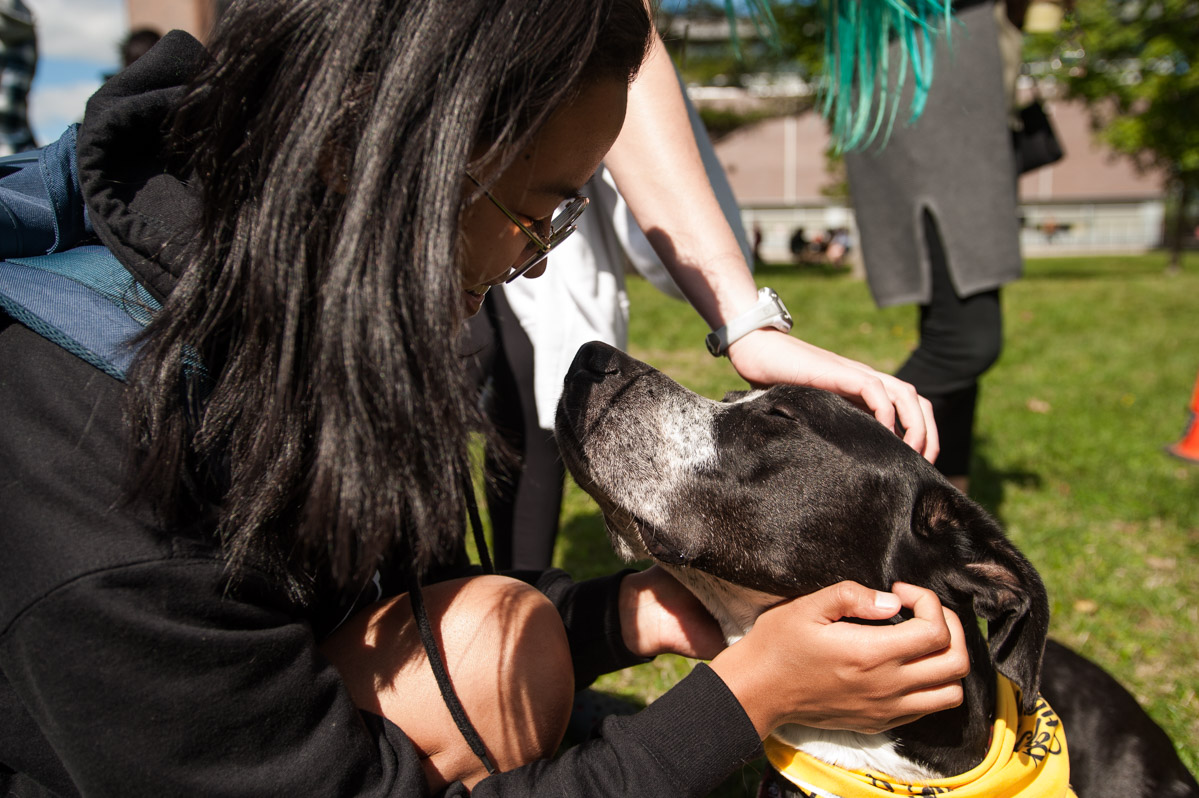Blue, Carleton University’s first therapy dog who trailblazed the program in 2016, passed away last week.
“He had real compassion and empathy that was felt by all who came into contact with him,” Shannon Noonan, Blue’s owner, wrote in an email. “Blue had that quality where he could make anyone he met feel like they were the only person in the room.”
Noonan is also the manager of student care and support, and student mental health outreach in the office of student affairs.
Noonan adopted Blue, a Great Dane-Pointer mix, from the Ottawa Dog Rescue when he was two. While he was named for his one blue eye, Noonan wrote the name also fits his personality.
“He had such a calm demeanour about him,” wrote Noonan. “[It’s] moving and comforting to see the beautiful comments and stories people are sharing.”
“He just kind of got it,” said Miranda Caley, a second-year journalism student who visited Blue regularly as a freshman. “He just kind of knew exactly what he was supposed to do, knew how to channel all the anxiety and nervous energy from all the students who came to him.”
“Blue made significant contributions to the Carleton University community by helping to normalize conversations around mental health,” Carleton president Benoit-Antoine Bacon said in a statement. “The therapy dog program is part of all we do to support our students and Blue played a key role in the development of that program.”
The program, which has expanded to include 13 dogs, offers the opportunity for students to reduce their stress and connect with others. The dogs and their handlers—all members of the Carleton community—offer regular office hours at various locations across campus. The dogs go through a special training and certification program before beginning their work.
“The biggest function that the therapy dogs program provides is social support and alerting students of different services that are available to them,” said Carleton psychology professor Andrea Howard, who sits on the student mental health committee.
In addition to the short-term stress reduction associated with physical contact, those who visit therapy dog sessions form a community and connection with other students. The program can also serve as a touchpoint for further mental health services.
“It can be really useful for students who don’t know what’s available to them here,” said Howard.
The program can be especially effective for first-year students, who have to adjust to a new academic, financial and personal landscape when coming to university.
“Every time I go there . . . you kind of get an immediate connection with everyone,” said Caley. “It gets you talking to different people you wouldn’t necessarily talk to.”
By losing Blue, students who attended his visiting hours may have lost part of their social support network.
“This could be really stressful for them,” said Howard. “It’s the dog, but it’s also the people who tend to come at the same time.”
Students may also feel some degree of loss and grief after Blue’s passing, in the same way one would deal with the loss of their own animal.
“It is difficult to summarize Blue’s magnetic personality,” wrote Noonan, “but he was so loved.”
Featured image from file.






